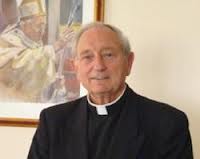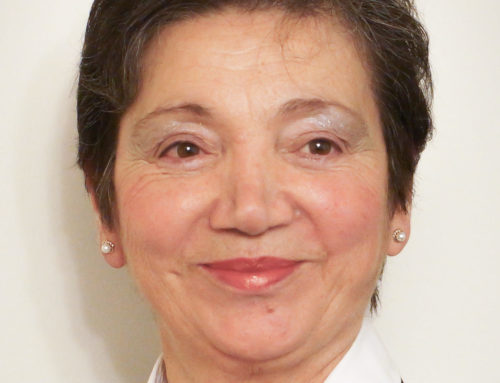SECOND SUNDAY OF LENT (B) -2009/2018
(MK 9:2-10)
Introduction
It is very striking that Mark has no account of the resurrection. Mark tells us that the women saw a young man sitting in the tomb who told them to tell the disciples that they would see Jesus in Galilee. But here at the transfiguration the resurrection is prefigured. There is no doubt about what Jesus resurrected looks like. He is in glory, splendiferous, radiant with all the qualities that belonged to the Father in the Old Testament. Moses had to veil his face having seen God, for the Jews could not look on Moses who reflected this glory (Ex 34:35). Now in the transfiguration scene we have the disciples relating with Jesus in the way Moses related with God, but it is clear- Jesus is greater than Moses. He is the beloved Son. They hear the Father’s voice saying this in the symbolic cloud that indicates his presence. As he did at the baptism (Mk 1:11). With the departure of Moses and Elijah the Apostles see only Jesus alone with themselves- he is their Immanuel (God with us) forever.
Mountains
Mountains in the biblical world are where God discloses his presence. Moses and Elijah were associated with God’s epiphany on Mt. Horeb (1 Kgs 19:1-21-Elijah) and Mt.Sinai (Ex 24-Moses)- the two names given for the same location (NJBC 73:27). These two prophets associated with the beginning of Israel’s experience of Yahweh and its ultimate consummation are there to indicate their foundational importance in God’s self-revelation, now being completed in the revelation of his Son. Opinions have varied as to which was the mountain of the transfiguration. Its name is not given in our text. Mt.Tabor in Galilee- has been favoured by tradition. And that is where Christian pilgrims always go on their trips to Palestine. There they find one Church under the direction of the Franciscans, and on the other side one in the hands of the Greek Orthodox monks. Mt.Tabor, of course, is associated with Deborah and Barak and the defeat of the Canaanites in the Old Testament (Judges 4-5). Nowadays young Israelis like to climb it, and it is not easy to reserve the place for the pilgrim people who go up there to pray.
Theological
Moses and Elijah were seen with Jesus by the apostles. Moses represents the law and the prophets. Elijah is the prophet of the end times. Jesus has brought the new law, he is the new covenant. The final times will be inaugurated with the presence of Elijah. The question posed by Jesus at Caesarea Philippi (Mk 8:28) Who do people say that I am? is now answered. Jesus is more than Moses and more than Elijah or one of the prophets. He is God’s only Son. Listen to him, says the voice from the cloud.
Witnesses
The apostles Peter and James and John were the essential witnesses of this event. And these are the same apostles who preached the resurrection of Jesus afterwards. On the mountain they are presented as purely passive, apart from a misguided suggestion of a frightened Peter not knowing what he was talking about (Mk 9:6). One thing is certain. They were not making this event up. And the same is true at the resurrection. In his presence they listened to him.
Its Meaning for the Church
For the Church Jesus is the Lord of glory. It must preach and try to explain the meaning of this to the whole world. The evangelists said the Old Testament was pointing to this all the time, namely the coming of God’s reign on earth. Jesus is the fulfilment of the Law of self-sacrificial love. He is more than a prophet, more than Moses and Elijah. As God’s Son he teaches everyone, he heals everyone, he dies for everyone and rises for them. The Apostles wondered what rising from the dead might mean. The Transfiguration put the cross and the glory together, death and resurrection. There is no contradiction. Love implies sacrifice.
In Practice
The glory of God is both beauty and salvation in the Old Testament. It is radiant splendour. And humans are made in the image and likeness of God. Ps 8 talks about this: you made them a little less than an angel, a little less than God. You crown them with glory and honour (v.5). And nature reflects the glory of God: the heavens proclaim the glory of God (Ps 19:1ff.). This is the world God created, and he created human beings with it to love it and find a home in it. We recall St. Irenaeus: the glory of God is humans fully alive. The splendours of nature bodied forth the splendour of God’s only Son. The means of revelation are too often ignored or exploited. One has only to walk down our local Applebury Hill or along the road to Flookburgh to see how little some care for beauty, and little respect this wonderful place, tossing their refuse along the side of the road or into other people’s property. Abandoned plastic seems to be the plague of the age. And expletives too often foul our beautiful language even in the public media.
Conclusion
For believers the Transfiguration brings a lot of things into focus. The beginning and end of the universe are expressed in this transformation of all creation transfigured. The glory of God was shining in the face of Christ (2 Cor 4:6). As spring comes once again we are reminded of the splendour and the glory after the passing of winter. “Nothing is as beautiful as spring…the world is charged with the grandeur of God…There lives the dearest freshness deep down things” (Fr. Gerard Manley Hopkins). We can help our faith by looking at and loving these glorious sights. These are signals of transcendence. The splendour of a morning dawn in this part of the world, the ever growing chorus of the birds, the setting sun as the evenings grow longer, lambs gambolling in the fields, the proliferation of the flowers. This is our Galilee, our Mt.Tabor. And above all, fellow human beings, with the story of their lives written on their faces. It is good for us to be here (Mk 9:5). At Mass we thank God, and each other, and give him praise. Lent is a season of joy; let us be glad of it! A happy Sunday to you all.
Rev Richard J.Taylor
Spritual Advisor, Matercare International
Boarbank Hall Cumbria, UK










